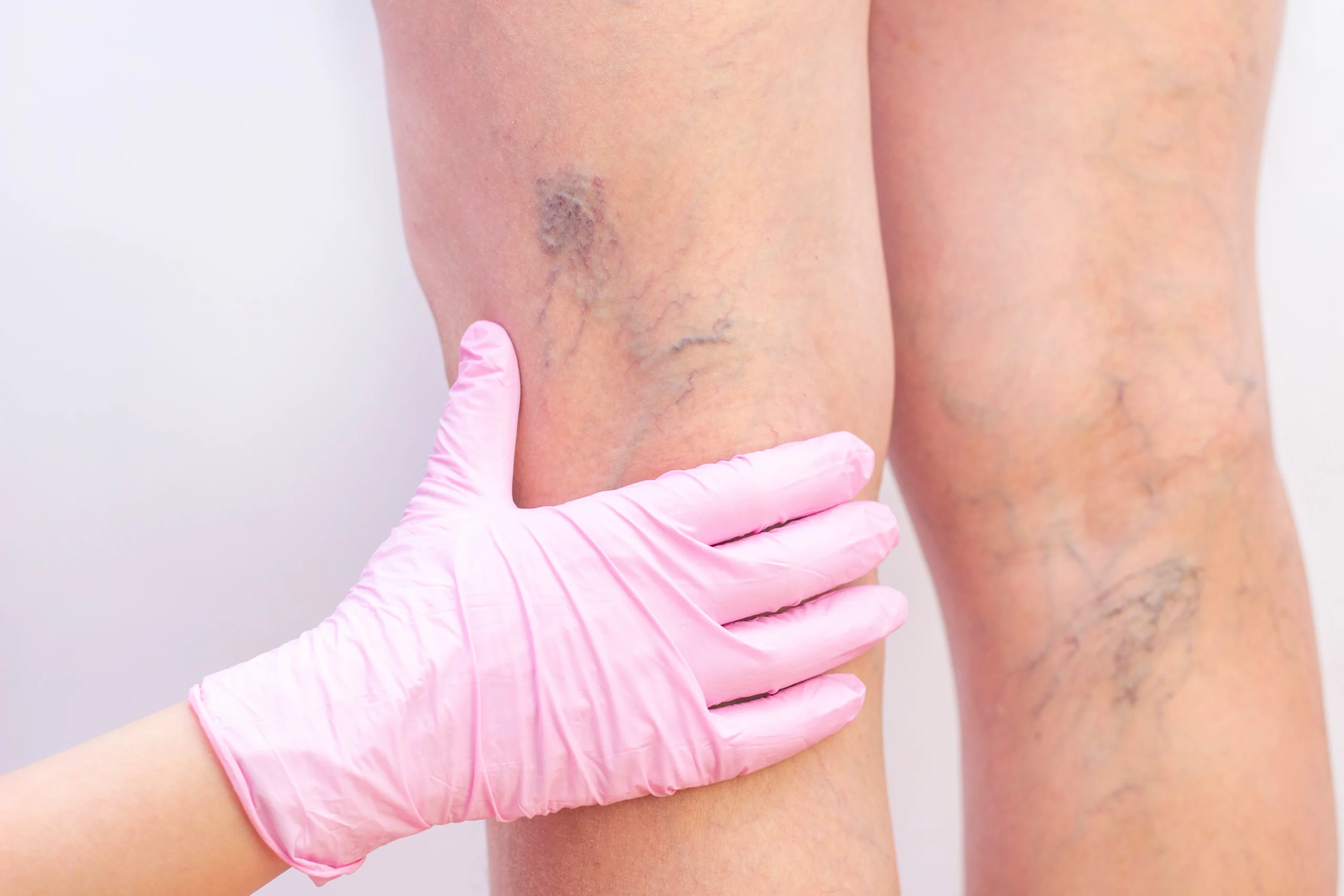
Spider veins and varicose veins are common vascular issues that affect many individuals. Spider veins appear as small, web-like lines just beneath the skin, often in red, blue, or purple hues. Varicose veins, on the other hand, are larger, swollen, and twisted veins typically seen on the legs. While these conditions are not usually harmful, they can cause discomfort and negatively affect self-esteem. At Aura Med Spa in Bellaire, TX, we offer effective treatments to reduce their appearance and help you feel more comfortable in your skin.
Several factors can increase the likelihood of facial spider veins, including genetics, sun exposure, rosacea, aging, and underlying health conditions. Family history, UV damage weakening vessel walls, chronic inflammation from rosacea, skin thinning with age, and autoimmune or vascular disorders like lupus or scleroderma all contribute to visible veins. Recognizing these helps create a tailored care plan.
Spider veins often present themselves as small, visible blood vessels under the skin. Common symptoms include:
While spider veins themselves are not usually painful, they can often cause discomfort and pose to be a cosmetic concern for many. If left untreated, they may progress, and in some cases, develop into varicose veins.
Spider veins come in various forms, each presenting differently on the skin. Understanding these types of vascular issues can help you identify the best approach for treatment.
Each type of spider vein has unique characteristics, but all can be treated effectively with the right approach to help restore smoother, clearer skin.
Spider veins and varicose veins may form as a result of various factors that impact circulation and the condition of your blood vessels:
While some risk factors (like genetics) are unavoidable, there are steps you can take to reduce the development or worsening of spider veins:
Preventing spider veins requires awareness and care, but with the right treatment and lifestyle tweaks, you can reduce their appearance and keep your legs feeling comfortable and confident.


Let’s get in touch!